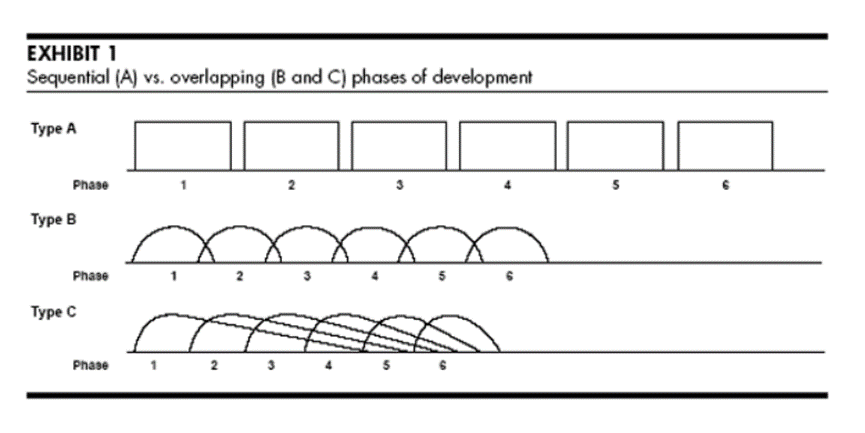Developing your company's purpose is one of the most critical steps in building a meaningful and successful business. Gone are the days when work was solely about trading time for money. Today, employees seek a deeper sense of purpose, often valuing it more than financial compensation. In this blog, we explore the significance of company purpose, why it matters, and how to develop your company's purpose to inspire your team and create a basis for sound future decision-making.
When I started my career, the philosophy was that work was a transactional exchange where you performed a role in exchange for money. The assumption was that you always wanted more money and therefore would happily modify your performance and behaviour to achieve this. Yet, as a consultant, I worked with teams that completely defied that notion. They worked for something else.
This concept fascinated me and drove me to understand what motivates people. My employer noticed this and moved into a management position. While I found this incredibly exciting, I struggled to find good role models to learn from. The system of work in which I had grown up was a leftover from the last century, devoid of good examples for a hungry mind. Thankfully, my timing was good, and work was about to undergo a seismic shift.
Fast-forward 22 years, and we have a very different world of work. It turns out that why we work (purpose) is extremely important to people—at times, more important than money.
There are a lot of different reasons for this, but the two major trends I see are:
- Societal shifts: People used to obtain most of their meaning and purpose outside the workplace, largely from community groups, churches, and neighbourhoods. These are now in obvious decline, and people’s need for purpose has turned to the workplace.
- Advances in behaviour science - we now understand a lot more about what motivates people, and what provides purpose and meaning.
Societal Shifts
Humans have an inherent biological need for social connection. Traditionally and instinctively, we have developed a sense of meaning and purpose through social groups. However, attendance in social groups is declining.
In Robert Putnam’s book Bowling Alone, he illustrated the decline in civic participation, from community groups to religious organisations, and its link to the breakdown of social capital. Younger generations, such as millennials and Gen Z, are significantly less likely to join local groups, further accelerating this decline.
Church attendance has steadily declined since the early 2000s, a trend confirmed by multiple surveys from reputable research institutions. In the United States, less than 50% of the public now attend church regularly - for the first time, it has dropped below 50%.
We used to find meaning and purpose in society. With that in the decline, we seek to fulfil this basic human need at work.
Behavioural Science
Neel Doshi and Lindsay McGregor's book Primed to Perform is a compelling reward on the topic of human motivation. They categorise work into two types:
- Tactical performance is "how effectively your organisation sticks to its strategy." Good tactical performance (rules, checklists, and standard operating procedures) is essential for certain types of work.
- Adaptive performance is “how well your organisation diverges from its strategy." It’ shows up as creativity, problem-solving, resilience and innovation.
Over the last century, we have excelled in tactical performance. But as our world becomes increasingly Brittle, Anxious, Non-Linear and Incomprehensible, adaptive performance is critical.
Six factors impact adaptive performance - three positive and three negative:
- Play - when you are motivated by the work itself.
- Purpose - you work because you value the work’s impact
- Potential - you grow and learn from the work
- Emotional pressure - you work because some external force threatens your identity.
- Financial Pressure - you work to gain a reward or avoid a punishment.
- Inertia - you dont know why you work. You go to work because you did yesterday.
It turns out that why you work affects how well you work. Purpose really matters. For a deeper dive into this see this webinar we did with Neel Doshi.

Finally, the Better Up Meaning and Purpose Report highlights a compelling and confronting statistic : 90% of people surveyed said they would sacrifice up to 23% of their future lifetime earnings for work that is more meaningful.
That is twenty-three per cent of their earnings for the rest of their lives to have meaningful work.
If businesses haven’t clicked yet, purpose and meaning are very important.
What is Purpose?
We’ve discussed the importance of Purpose and will shortly dive into how to develop yours. But first, we need to clarify what exactly purpose is.
The purpose is the underlying reason why your company exists. It’s the broader impact your organisation aims to achieve in the world. It ignites people with the energy, passion, and motivation to get out of bed each morning.
Examples:
- Amazon: “To be Earth's most customer-centric company.”
- CVS Health: Helping people on their path to better health.
- eBay: “To empower people and create economic opportunity for all.”
- Apple’s Purpose: “To empower creative exploration and self-expression.”
A good purpose statement leaves freedom and scope on the how. As a founder, you want your people to think about new and innovative ways to achieve the company's purpose. If any of our team approached me with a new idea, I would first apply the purpose filter—“Does it help us achieve our purpose?” It needs to make sense commercially, too, but purpose comes first.
How to Develop your Company's Purpose
The work required to develop your company's purpose is significantly more challenging than you might first think. It took me over six months in my second company, Clarus, as my first attempts felt cheesy and too lofty.
What I (eventually) learned was to let go of the need to “get right.” Remember, perfect is the enemy of good.
Start with your underlying beliefs and passions. Why are you putting all this effort into a business? What is the rallying cry that will inspire others? Why should anyone care? Ponder these questions and then write down your top five ideas. Now go share them with others. Don't just read them out; tell a story about the problem this business solves and why it is important. Watch how they respond. Are they motivated by it, or are they ambivalent?
If you are an existing business looking for your purpose, try this. One of the best techniques I’ve used came at Clarus. One of the team members, Robbie May asked, “What would the world look like if Clarus disappeared tomorrow? What is the hole we would leave in the business landscape? THAT is our purpose.” I found that an excellent way of thinking about it. As a team, we could answer this immediately.
If you are a new business, your purpose will likely come from
- Market research - what unmet needs or problems does your proposed business solve? Look at what your competitors are doing and understand what needs are not being addressed by their products or services.
- A strong understanding of your customers' needs - it is very hard to develop a purpose statement if you dont know your customer's needs. The best way to understand these is NOT surveys and polls. Get out from behind your laptop and talk to them. You will be surprised by how much you will learn.
Start with these, understand how your business can solve a particular problem and develop a starting purpose you can then iterate on.
Example: Developing our Company Purpose at Radically
When Dan and I started Radically, we knew the problem we wanted to solve. Companies told us they needed help to modernise how they delivered work. Many of them had tried agile but failed to make any meaningful impact.
At the time, the only option was one of the Big Four consulting firms, and it was clear that firms engaged them reluctantly. Dan and I were both tired of seeing people roll their eyes and complain about these companies, and we felt we could do a much better job. In short, we wanted to show that consulting doesn't have to suck.
We also wanted to be an upstart that would challenge the status quo but had clear business acumen and the credibility to work with executives. We wanted to be alternative but corporate.

This was our starting purpose:
We help leaders transform their organisations to achieve radically better outcomes.
We started with clients who already knew us, trusted us, and worked incredibly hard to meet our purpose and started earning a good reputation. After our first year, we realised our purpose statement needed to be narrower. We pivoted to
We help businesses adapt to meet the needs of a rapidly changing world.
This worked well for us for many years, but as the company grew we knew we needed a purpose statement from our people. At a company offsite, we discussed who we are and what we believe in. Out of that came our refined purpose statement of today:
We design and build future-ready businesses by bringing together high performance and humanity.
This purpose statement now clearly defines who we are, why we exist and what we do. We passionately believe that a future-ready firm needs to be at the intersection of high performance and humanity.
Notice it also suggests what we aren’t and don't do. We dont high-performance at any cost. We dont believe in armies of soulless consultants in suits, largely made up of graduates straight out of university, billing every minute possible.
Don't get hung up trying to get it perfect. Start with what you have and iterate over time.
Summary
Humans are hardwired to come together in social groups to achieve something bigger than ourselves. Tapping into this is both ethically and commercially astute. A strong purpose drives good decision-making, aligns stakeholders, and inspires employees by providing meaning and direction.
This approach is the future of business. It creates places where people want to work and inspires belief, promise, and hope.
In my next post, I will discuss the challenges of running a purpose-driven firm. It is hard and requires a lot of new leadership skills!
If you are interested in discussing anything here (or any other lessons), please contact me over LinkedIn.

































 The iterative, incremental nature of Scrum can help to bring focus, commitment, alignment and collaboration to the forefront of your business.
The iterative, incremental nature of Scrum can help to bring focus, commitment, alignment and collaboration to the forefront of your business.
 It turned out this was happening everywhere. There were literally thousands of invisible undercurrents running all the way through the organisation based on whatever work well-meaning managers were trying to get done. They had no transparency of what was actually going on.
It turned out this was happening everywhere. There were literally thousands of invisible undercurrents running all the way through the organisation based on whatever work well-meaning managers were trying to get done. They had no transparency of what was actually going on.
